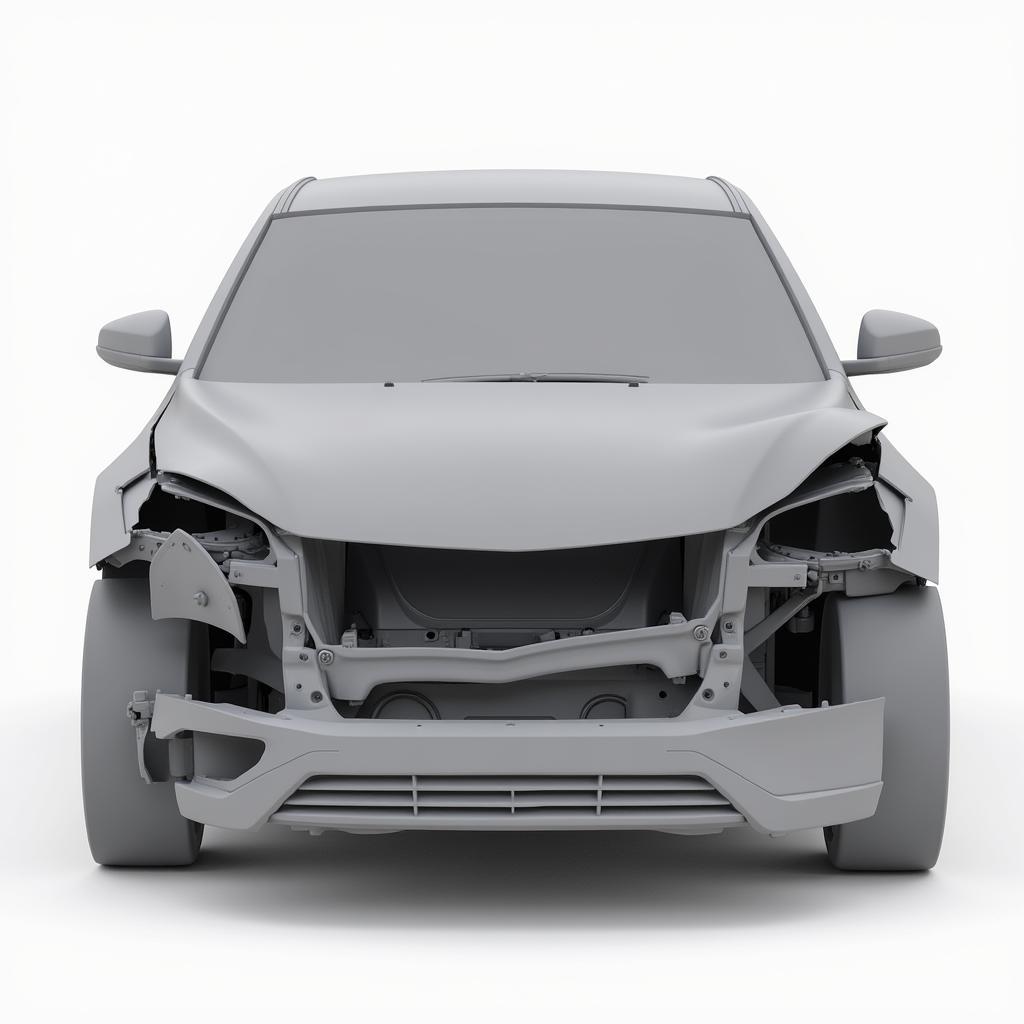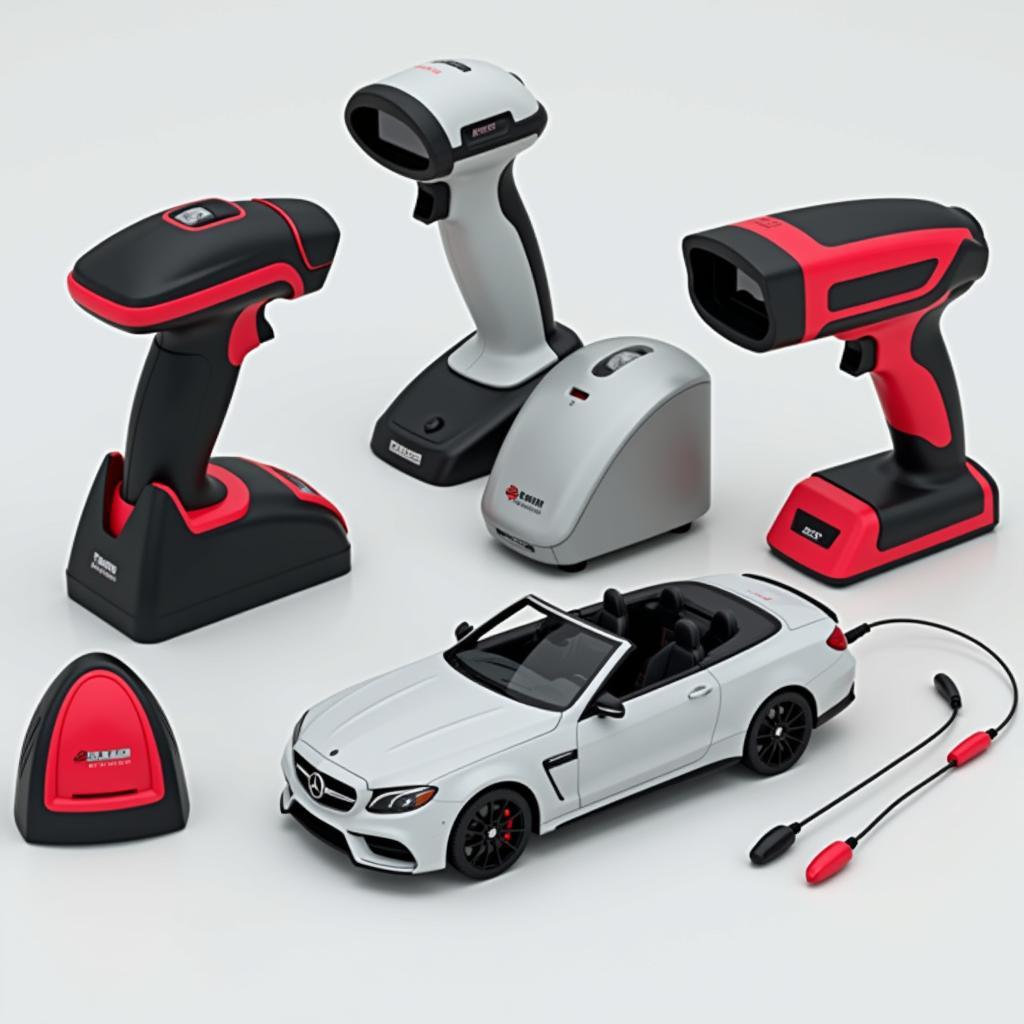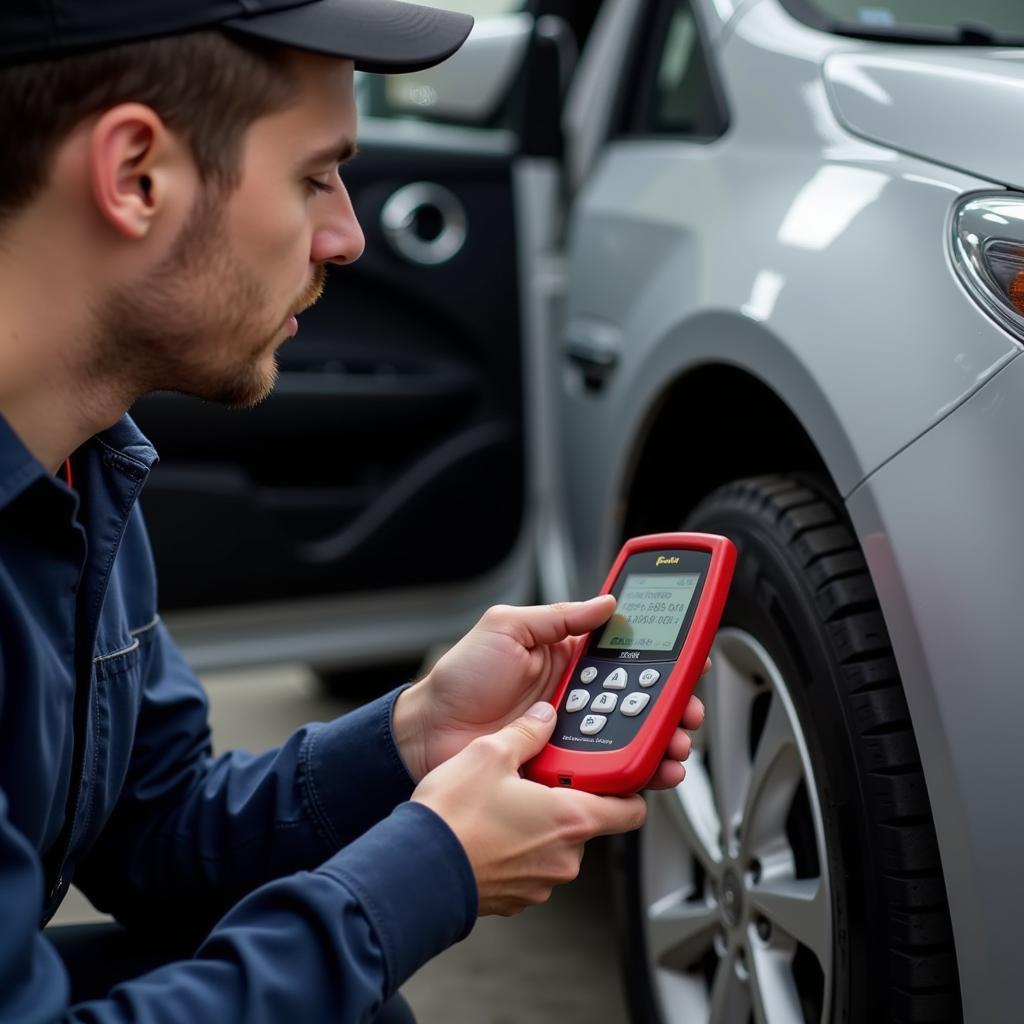The automotive repair industry is constantly evolving, with new technologies emerging to enhance efficiency and accuracy. One such innovation that is transforming the way repairs are conducted is the use of 3d Scan Tools. These tools provide a digital representation of a vehicle’s components, enabling technicians to diagnose problems, create custom parts, and perform repairs with unparalleled precision.
How 3D Scanning Works in Automotive Repair
3D scanning involves using specialized devices to capture the shape and dimensions of an object. In the automotive context, these devices emit lasers or structured light to create a point cloud, a collection of data points representing the vehicle’s surface. This data is then processed by software to generate a 3D model.
Advantages of Using 3D Scan Tools
The adoption of 3D scan tools offers numerous benefits for automotive repair businesses and technicians:
- Increased Accuracy: 3D scans provide precise measurements, eliminating the guesswork often associated with traditional repair methods. This ensures that repairs are carried out accurately, reducing the risk of errors and rework.
- Enhanced Efficiency: 3D scanning streamlines the repair process by providing technicians with a comprehensive view of the damaged area. This eliminates the need for time-consuming disassembly and allows for faster diagnosis and repair planning.
- Custom Part Creation: 3D scanning enables the creation of custom parts tailored to the exact specifications of the vehicle. This is particularly valuable for classic or rare cars where replacement parts may be unavailable.
- Improved Documentation: 3D models serve as digital records of the repair process, providing detailed documentation for insurance purposes or future reference.
Applications of 3D Scan Tools in Automotive Repair
3D scan tools have a wide range of applications in automotive repair, including:
Collision Repair
3D scanning is becoming increasingly common in collision repair shops. It allows technicians to accurately assess the extent of damage, create precise repair plans, and ensure that the repaired vehicle meets factory specifications.
 3D scan of a collision-damaged car
3D scan of a collision-damaged car
Reverse Engineering
3D scanning plays a crucial role in reverse engineering, allowing technicians to recreate parts that are no longer in production. By scanning an existing part, technicians can generate a 3D model that can be used to manufacture a replacement. 3d scanning reverse engineering tool provide a cost-effective solution for obtaining accurate replicas.
Restoration
For classic car enthusiasts and restoration experts, 3D scanning offers an invaluable tool. It allows them to digitally preserve the original design and dimensions of a vehicle, ensuring that any restoration work maintains its authenticity.
Customization
3D scanning empowers automotive enthusiasts to personalize their vehicles with custom-designed parts. Whether it’s a unique body kit, a bespoke interior component, or a one-of-a-kind engine modification, 3D scanning makes it possible to bring these ideas to life.
Choosing the Right 3D Scan Tool
The market offers a variety of 3D scan tools, each with its strengths and limitations. When selecting a tool, consider factors such as:
- Accuracy: The level of accuracy required for the intended applications.
- Portability: Whether a handheld or stationary scanner is more suitable. Mobile 3d scanning tools offer flexibility and convenience for on-site scanning.
- Scanning Range: The size of the objects the scanner can handle.
- Software Compatibility: Ensuring compatibility with the software used for design and manufacturing.
- Cost: Balancing features and capabilities with budget constraints.
 Different types of 3D scanners used in automotive repair
Different types of 3D scanners used in automotive repair
Future of 3D Scanning in Automotive Repair
As 3D scanning technology continues to advance, we can expect to see even more innovative applications in the automotive repair industry. These may include:
- Augmented Reality (AR) Integration: AR overlays digital information onto the real world, providing technicians with real-time guidance during repairs.
- Predictive Maintenance: Analyzing 3D scan data to identify potential issues before they become major problems.
- Automated Repair Processes: Utilizing robots and 3D scanning to automate certain repair tasks.
Conclusion
3D scan tools are transforming the automotive repair industry by enhancing accuracy, efficiency, and customization capabilities. As technology continues to evolve, we can expect to see even more innovative applications emerge, further revolutionizing the way vehicles are repaired and maintained. For automotive repair businesses and technicians looking to stay ahead of the curve, investing in 3D scanning technology is no longer optional—it’s essential.
Contact ScanToolUS today at +1 (641) 206-8880 or visit our office at 1615 S Laramie Ave, Cicero, IL 60804, USA, to explore our range of 3D scan tools and discuss how we can help you optimize your repair processes.



Pingback: Vehicle Scan Tools Types: A Comprehensive Guide - Car Scan Tool